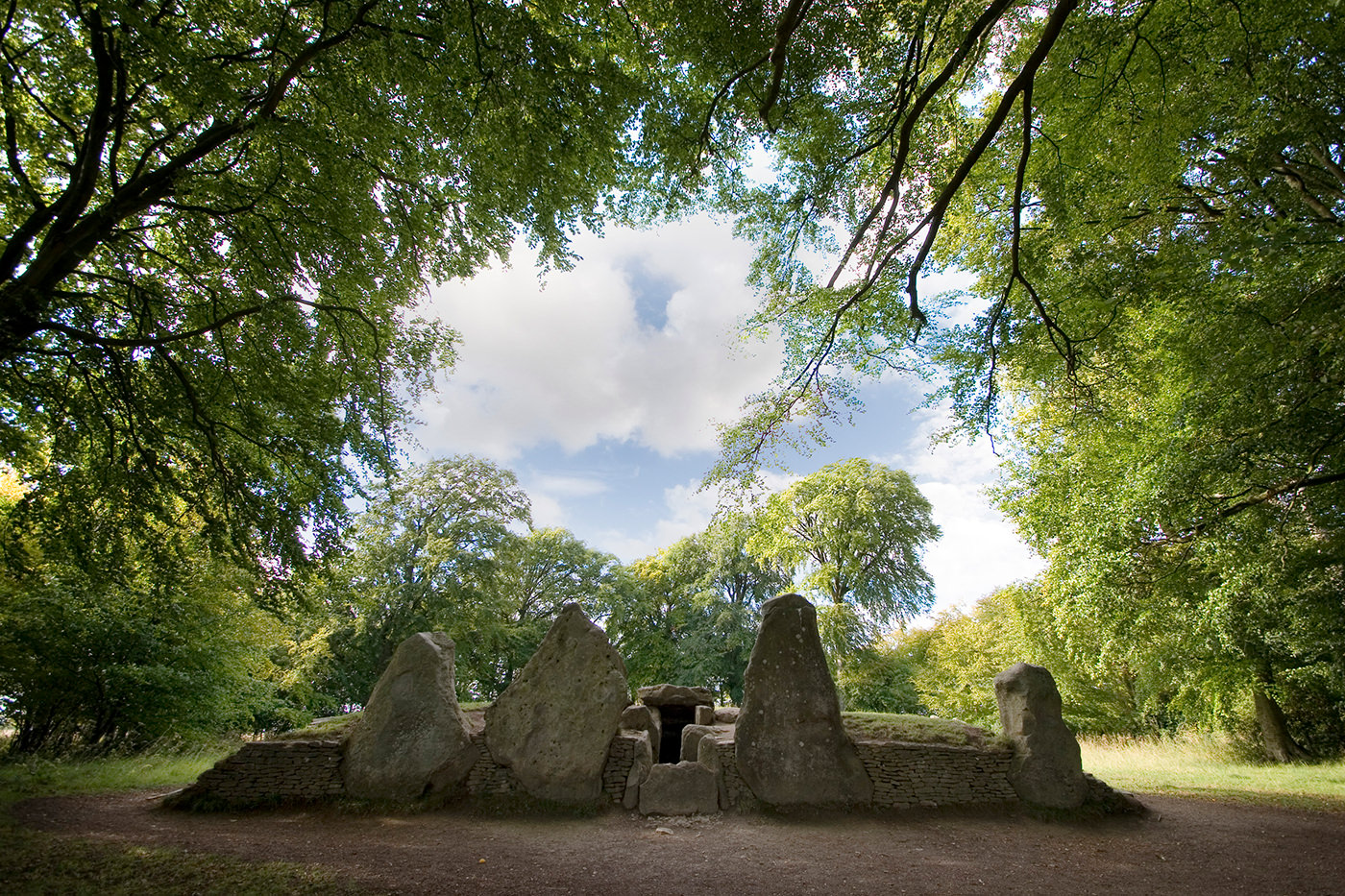Tackley History Mysteries No. 6
Where Have Our Barrows Gone?
Long barrows are monumental burial chambers built by the earliest farmers
between 3500 and 3000 BC. They are the earliest manmade structures to
still survive in the landscape, and where they do they are impressive. Those
at West Kennet near Avebury, Hetty Pegler’s Tump near Uley in
Gloucestershire, and Wayland’s Smithy in the White Horse hills above
Uffington are well-known examples. They consist of a large wedge-shaped
mound of stone and earth up to 100 metres long and 25 metres wide
at the entrance, which was often framed by large upright stones. The mound
rises to a height of up to four metres at the entrance and covers a series
of stone-built chambers in which many people were buried. When they were
built 5,000 years ago, they dominated their landscape — and they still
do.
The main concentration of long barrows in Britain is in the area that runs
north-eastwards from the west bank of the Severn right through the
Cotswolds, with a smaller grouping in the chalk of the Marlborough Downs.
The Severn/Cotswolds area contains the sites and/or remains of about two
hundred. Three of these were in Tackley: they were on either side of the
Banbury Road, about 500 metres south of the crossroads with the B4027
from Enstone to Islip and Wheatley. Two of them were about 50 to
100 metres west of the Banbury Road, and the other about
300 metres to the east. Two are marked on various Ordnance Survey maps.
They were perhaps unique among the barrows in the region by being so close
together.
All three have now disappeared, increasingly damaged by agriculture and
finally ploughed out in the last fifty years, although they did not meet the
brutal end that befell one of the two barrows in Steeple Barton which was
blown up by the local landowner in the 1840s. Its remains can be seen as a
low pile of stone with two pine trees growing through it in the large meadow
to the west of the Banbury Road just before the traffic lights at Hopcroft’s
Holt, about 100 metres in from the road.
The Tackley barrows were still just visible as low mounds in the 1970s. Are
there any memories of them? It would be wonderful if anyone has photos.
 Wayland’s Smithy
Wayland’s Smithy
Research and text: John Perkins. Photo: Msemmett
on Wikimedia Commons, CC BY-SA 3.0. Published: 2021
More Mysteries